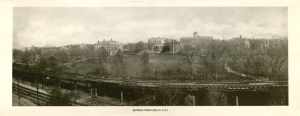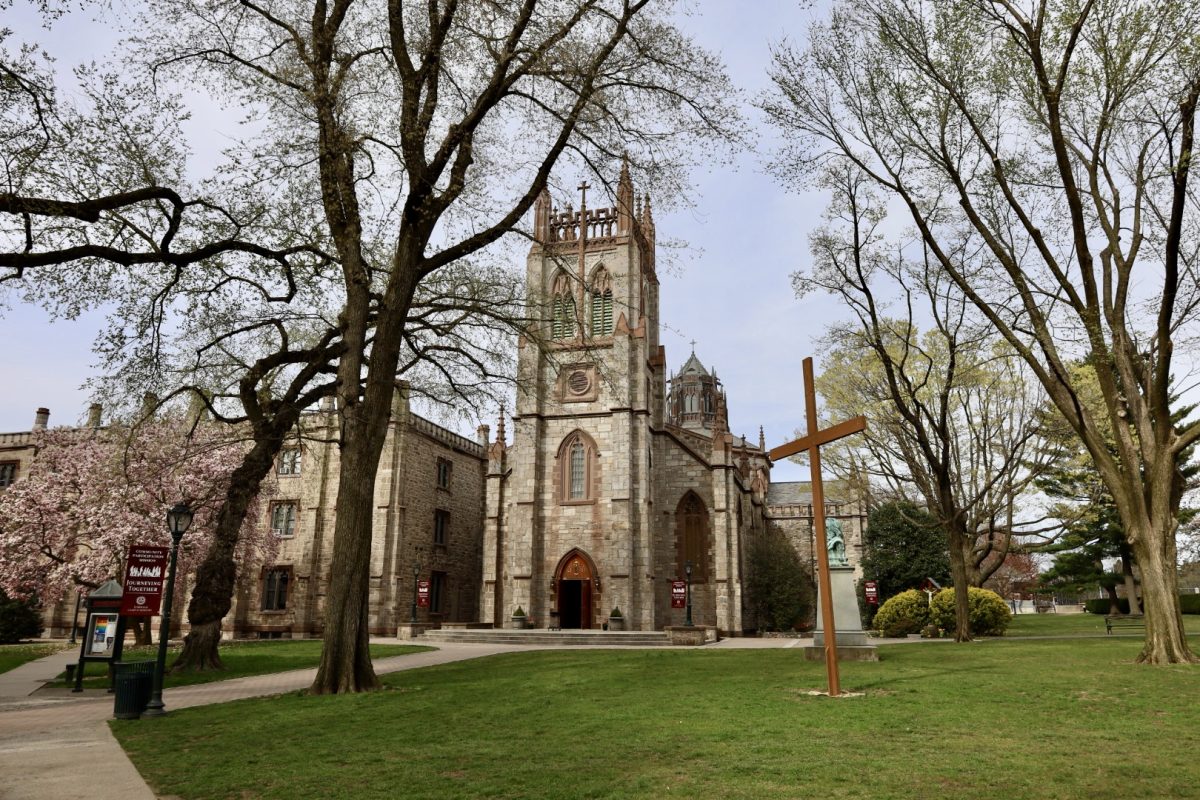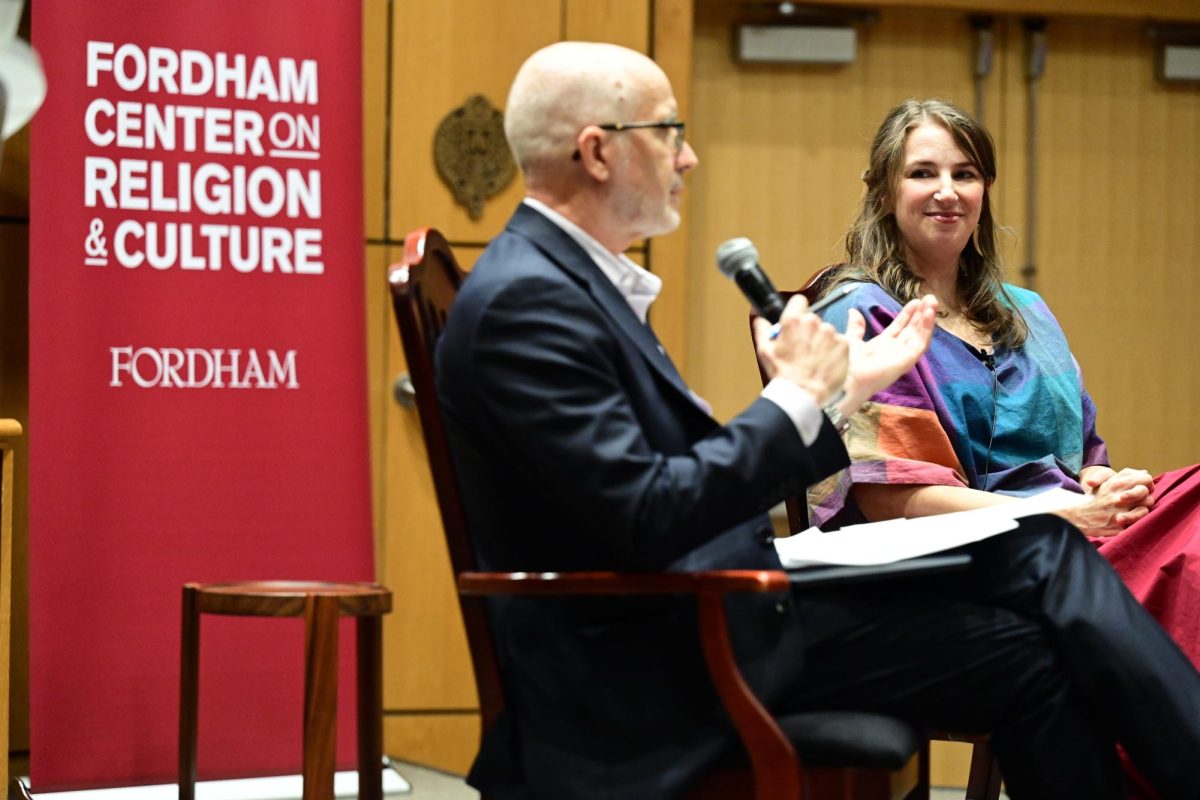By Amelia Antzoulatos
“Fordham always had an aura,” said Michael Mari, a retired Fordham Prep professor. As a classicist, the far-away landscapes of civilizations past intrigue him. Among them is the turn-of-the-century Fordham village in the Bronx.
“It started really from my walks to Fordham,” said Mari.
Mari began making these walks in the 1980s when he started his career at Prep. In those days, when he heard the entrance gates on Southern Boulevard, he said he was curious about the white concrete platform north of campus. Later, he would learn, this platform once housed Fordham University’s very own railroad station.

In the late 1800s, sparsely populated and still agrarian, the Bronx was known as the “newly annexed district” of New York City. Soon, the area attracted the attention of the Suburban Rapid Transit Company, who sought to connect the borough to the elevated railway lines of Manhattan. In his 1912 work “The Story of the Bronx,” Stephen Jenkins explains how the new Bronx line initially ran from Third Avenue to 143rd Street, and later to 161st Street.
According to the 1954 “Report on the New York City Transit Authority”, the “Third Avenue El” train was originally pulled by steam locomotives. After several years of “rearing and bolting horses frightened by the overheard trains,” the line was “electrified” in 1902.
The year 1902, Jenkins notes, also marked the addition of a new rail extension which passed through the grounds of the university all the way to Bronx Park. This little-known “Bronx Park Extension” offered direct access to the Botanical Gardens through Fordham from Pelham Avenue.
The Fordham University community remained unfazed by the potentially intrusive extension, according to the sentiments of one student writing in the 1901 edition of Fordham Monthly. The strip of land sold by the University – then St. John’s College – totalled 2,150 feet, but the line was expected to cause “little additional annoyance to the College,” seeing as “the grounds are so spacious that the steam railroad at its westerly border does not affect it much at present.”
Moreover, said the student, the extension was not considered “beneficial to immediately adjoining property,” but would nonetheless be “chiefly important for its addition to the transportation facilities” of the surrounding area.This student’s optimistic predictions fell flat. In ads early as 1888, the New York City mayor already began calling for a more efficient underground transit system, more fondly known as the subway, according to Jenkins.
Disruptive and “unsightly,” elevated rail lines blocked sunlight and lowered property values on surrounding streets, according to Andrew Sparberg’s “From a Nickel to a Token”. By the 1930s and 1940s, other elevated railways, like the Ninth, Second and Sixth Avenue lines, had already stopped running.
When it came time to demolish the Third Avenue El, the Bronx Park Extension was among the first to be abandoned in 1951. As for the rest of the line, the 1954 report cited decreasing passenger loads, old and wooden cars too costly to maintain and some $2,400,000 in potential savings as reasons for demolition.
“The Third Avenue line is the lone remaining relic of this bygone era and should join its contemporaries,” the report advised.
In 1955, the Bronx ‘El’ finally ceased operation, although one extension from Fordham Road to Gun Hill Road, which Mari remembers riding as a boy, continued to operate until 1973.
Similar to Manhattan, subway and bus lines instead overran the Bronx, and memories of the elevated lines faded into oblivion. But Mari believes it important to learn about “Fordham’s Forgotten Railroad,” which is also the title of the short documentary he created several years ago with his Prep co-educators, Dennis Ahern and Rosanna Estrella. In fact, he hopes students and faculty will continue the research project he began and even communicate with him about it in the future.
“There’s a certain relevancy perhaps to today,” he says. “In other words, being a classicist, we talk about roots and wings and honoring the past and embracing the future. That sounds like a noble phrase, but perhaps we can learn from the Victorians. The Victorians developed mass transit and they did it in maybe a less than perfect way, but… I think we can learn from those systems.”
He added that a high density area like New York must rely on mass transit in order to develop a efficient transportation system.
“That’s what this extension did,” he said.
For more information about the Bronx Park Extension, visit the Fordham Walsh Library Archives, the Bronx Branch of the New York Public Library, The Bronx County Historical Society, or watch “Fordham’s Forgotten Railroad,” available on Youtube.







































































































































































































